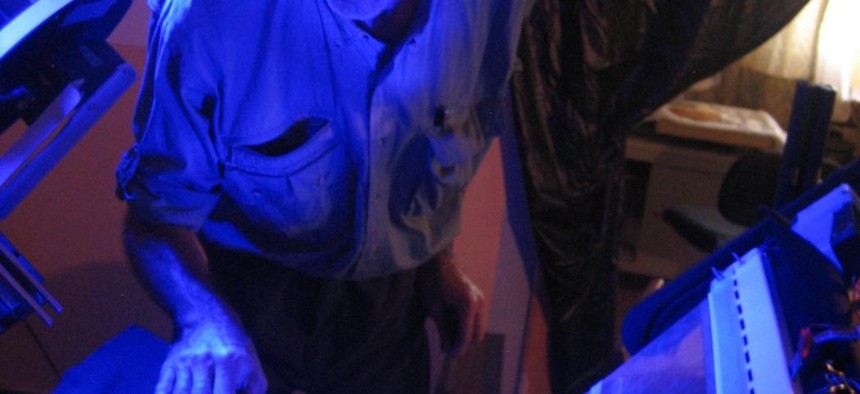Advanced Technology Reveals the Invisible in Centuries-old Manuscripts
The Library of Congress is using an advanced imaging technique to look for hidden text in old documents, including the Declaration of Independence.
Meghan Hill knows how to operate a specialized camera that reveals the secrets of ancient manuscripts from Egypt's Sinai desert, but she still has to deal with the occasional photobomb.
"We had a fly," Hill said. "Since it was in the dark room, and we turned off all the exterior lights, it flew to the only source of light it could find. It landed on the document, stayed for the entire imaging, and then flew away right after. So when we were developing all these images, we had these incredible, high resolution images - of a fly."
Hill, a hyperspectral imaging technician at the Library of Congress, had to repeat the photoshoot, this time ensuring the lens was pest-free.
Her efforts are part of a project that is digitally capturing ancient documents from the remote St. Catherine's Monastery, using specialized cameras and lighting conditions to expose text or images invisible to the naked eye. She and others talked about the first scholarly results from researchers’ photography of the Sinai documents Monday at the Library of Congress.
The imaging techniques are handy for studying documents at the remote St. Catherine’s, where it was historically difficult to deliver writing materials. To preserve pages, monks often reused paper by erasing it and writing over the old text. These pages, known as “palimpsests,” contain remnants of the former script hidden between or beneath the lines of newer text. With hyperspectral imaging, researchers are in the midst of exposing invisible or illegible script on nearly 7,500 pages of palimpsests.
Because the cameras capture so much information, it takes three or four minutes to photograph each page multiple times, Hill said. The result is 630,000 high-resolution images, an enormous amount of data.
"If you were to put all these images together, in a full-length movie, and you were to watch it on Netflix, 24 hours a day, it would take you 2½ years to look at all these images," Michael Toth, the program manager of the Sinai Palimpsest Project, said. Toth has helped manage other hyperspectral imaging projects, including theArchimedes Palimpsests, theWaldseemuller 1507 World Map and a rough draft of the Declaration of Independence.
Part of Toth's job is handling logistics, details that are complicated by the remote location of the monastery.
"We have a very long logistics chain," Toth said. "There's no Best Buy, there's no Radio Shack for hundreds of miles."
The monastery's isolation has also caused some to wonder if documents thought lost to history are hidden within the palimpsests. One audience member asked if any manuscripts from the Library of Alexandria could have ended up at St. Catherine's, since monks were living at Sinai when the library existed.
The Library of Congress has used similar imaging tools to examine famous American documents such as the Declaration of Independence. Fenella France, the chief of the preservation research and testing division at the Library of Congress, said the imaging is important because it captures a culture otherwise lost to history.
"We don't know what they did back then," France said. "This tells us the thought process. What were they thinking when they created this document? The palimpsests, the copies, the little inscriptions and changes ... this is a wonderful technique to pull out invisible information."



